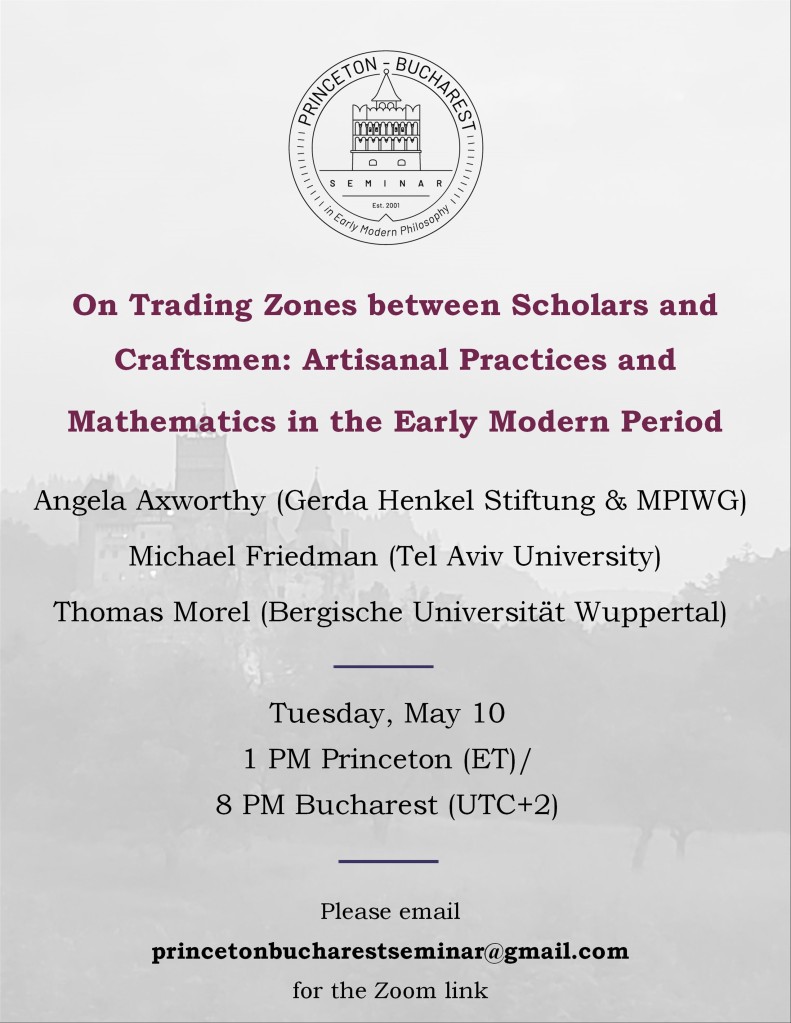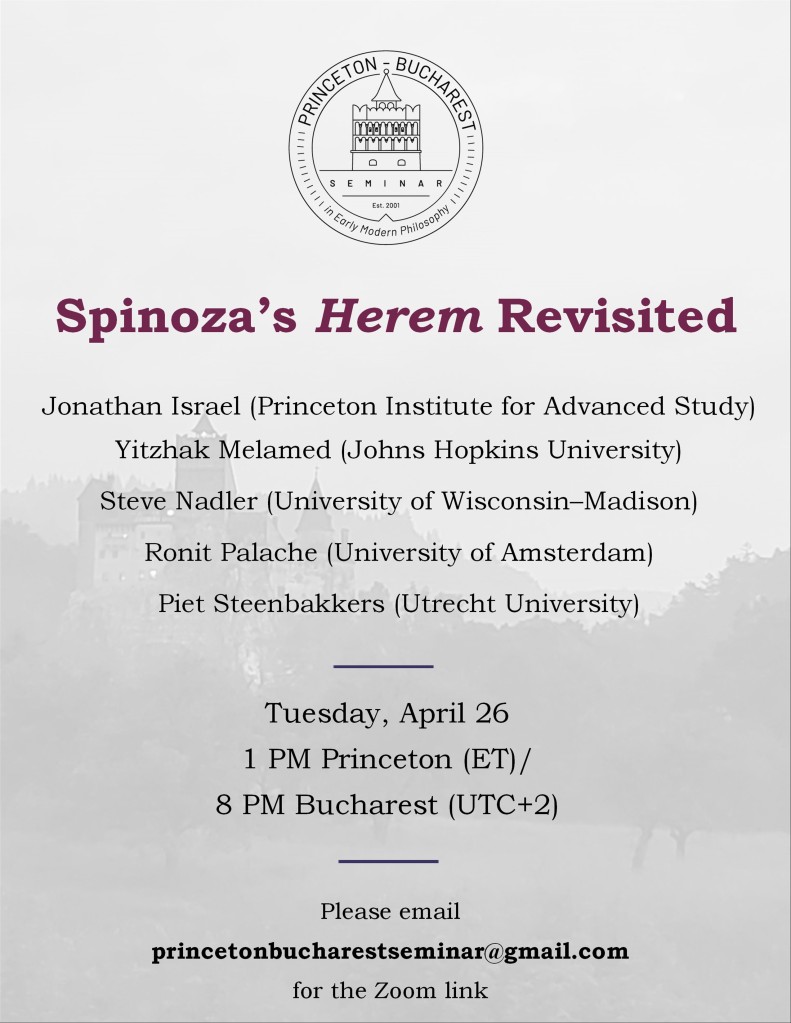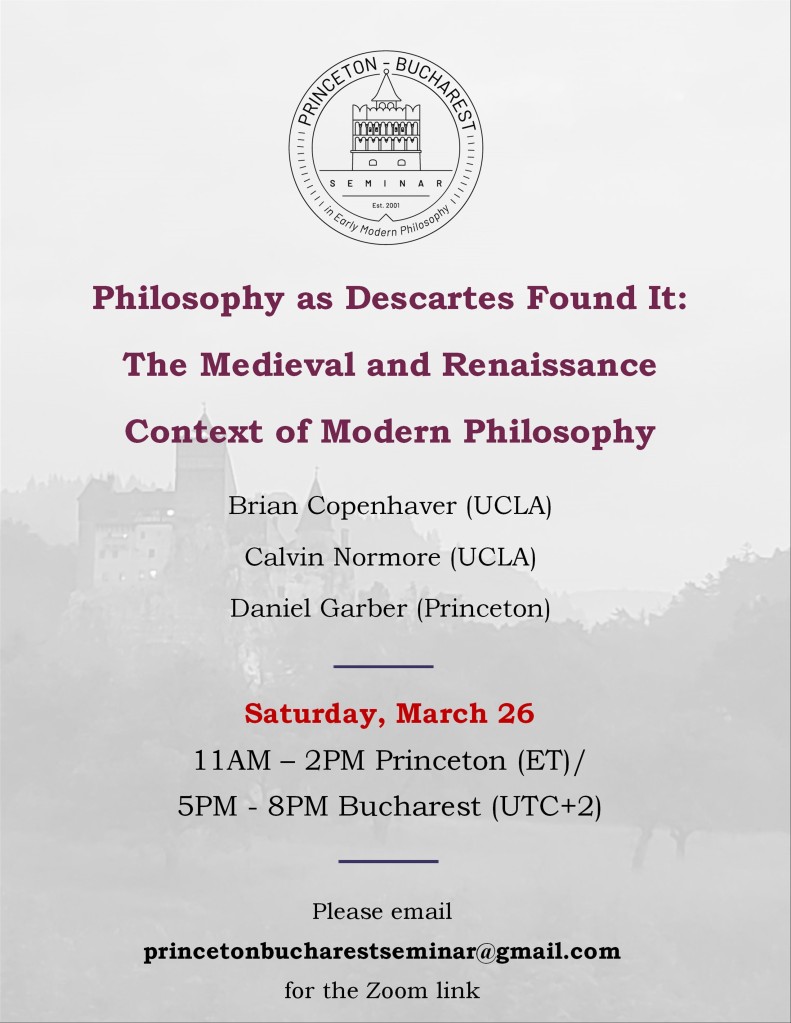We are using the same link as last fall. If you don’t have it, email us at princetonbucharestseminar@gmail.com.
DATE: Tuesday, May 10
TIME: 1 PM Princeton time (ET) / 8 PM Bucharest time (UTC+2)
PANEL: On Trading Zones between Scholars and Craftsmen: Artisanal Practices and Mathematics in the Early Modern Period
SPEAKERS: Angela Axworthy (Gerda Henkel Stiftung & MPIWG), Michael Friedman (Tel Aviv University), Thomas Morel (Bergische Universität Wuppertal)
CONTEXT:
The thesis of the seventeenth-century mathematization of nature was – and in certain aspects, still is – one of most influential of the twentieth-century historiography. But as Sophie Roux (2010) argued, one sees in the seventeenth century not only very little agreement that this mathematization was a unified or a unifying project, but also the appearance of a plurality of types of mathematizations. This diversity is perceived most clearly when one examines encounters (actual or hypothetical) between practical geometers, specialized groups of practitioners and artisans (miners, weavers, glass makers, etc.) on the one side, scholars, humanists and mathematicians on the other.
The overarching theme of the three talks is the characterization of these real or imagined encounters between artisanal-material knowledge and expertise and mathematical knowledge, theoretical and practical. More explicitly, which kind of rationality emerged due to these exchanges? Our aim is to examine how in early modern Europe the relations between artisanal-material practices and mathematics may be understood and to offer new directions of research for the study of these relations.
In recent years, a dense scholarship on craftsmen and artisanal practices – including but not restricted to the “material turn” – has underlined that the knowledge involved in these milieux was not easily mathematizable. Pamela Long has adapted Peter Galison’s concept of “trading zones” to approach the exchanges of knowledge and know-how in the early modern period, while Lesley Cormack has led an effort to revisit Edgard Zilsel’s thesis on the decisive role of superior craftsmen in the development of modern sciences. More specifically, Matteo Valleriani has presented mathematization as the “continuous re-organization of knowledge systems”, while Dana Jalobeanu and Grigore Vida have described processes of “colonization” of natural philosophy by mathematicians.
In this rich and developing historiographical field, the interactions between mathematicians and practitioners nevertheless raise several specific questions. How frequent and meaningful were the actual encounters between craftsmen and mathematicians? Was there an actual intellectual influence between the two groups even if those encounters were imaginary? How did the recently developed machines and techniques lead to new discoveries in mathematics? Conversely, how did the new developments in mathematics during the seventeenth century influence the way artisanal practices were considered by scholars, on the one hand, and by practitioners, on the other hand? Was a mathematization or mechanization of artisanal practices aimed to bestow a character of “mathematicity” to these practices? Were the values of proof and rigour of scholarly reasoning applied to artisanal procedures and methods so as to guarantee accuracy? And, if so, to which extent was this endeavour successful? It would anyhow be fruitful to study how mathematical definitions and principles, which were still fluid at the time, were influenced by the ubiquitous activities of accounting, measuring, or even teaching practical and applied mathematics. In relation to this, it is also important to investigate the way these encounters between artisanal practice and mathematical scholarship impacted the content, methods, status and representation of mathematical knowledge, practical and theoretical. How did such exchanges, for instance, influence the interpretation and explanation of Euclidean geometrical and arithmetical propositions in the numerous commentaries on Euclid’s Elements written and published in various languages in early modern Europe?
ABSTRACTS:
Practical approaches to Euclidean geometry in the 16th century
Angela Axworthy
The Elements of Euclid (3rd century BC) was regarded since late Antiquity as a reference work for the most fundamental aspects of geometry and had become by the 17th century a true best-seller. In the 16th century, the multitude of published editions, translations and commentaries of the Elements was however rivalled by the growing number of printed treatises of practical geometry, which was crucial to the development of elementary geometry beyond the Euclidean framework. While Euclid’s Elements represented a model of abstraction, rigor and necessity for any scientific endeavour, clearly separated numbers and magnitudes and left aside any mention of instrumental procedures or concrete applications of geometry, practical geometry defended an approach to geometrical concepts that is hands-on, utility-oriented, based on empirical apprehension rather than on abstract concepts and logical deductions, and which furthermore promoted innovativeness and allowed for a concrete as well as for a numerical consideration of magnitudes. Practical geometry treatises also taught a number of applications of geometry proper to utilitarian domains such as surveying, instrument-making, map-making, architecture, engineering, navigation or commercial arithmetic. Some of these treatises also offered a practical treatment of certain Euclidean principles and propositions, which incited in turn commentators of Euclid to adopt a more practical approach to the Elements, e.g. by teaching the instrumental procedures involved in the construction of figures or by referring to concrete applications of Euclid’s propositions. Through this approach, the interplay and convergence in the 16th century between the two traditions of practical and Euclidean geometry contributed to prepare for the development of the new geometry of the 17th century, canonically represented in first instance by Descartes’s 1637 Géométrie,which gave a central place to instrumental procedures and to the numerical treatment of magnitudes in the study and determination of geometrical concepts.
The goal of this talk is to show the different ways in which Euclidean principles and propositions were treated according to a practical approach in the 16th century, and what this meant for the representation and uses of geometry, and of its relation to practical and applied knowledge in the early modern era.
Joachim Jungius and scientific-mathematical investigations on textiles during the 17th century
Michael Friedman
Joachim Jungius (1587–1657), a German logician and mathematician, is mostly well known for his studies in chemistry, logic and botany, and due to the fact that Leibniz highly appreciated his works. However, in one of his hardly researched texts, Texturae Contemplatio, being a collection of notes from the 1630s and 1640s, Jungius investigates mathematically as well scientifically textile practices. These investigations range from offering a geometrical presentation of various weaves, to examining weaves with magnifying lens and seeing textiles as embodying essential characteristics of matter; the latter were brought to exemplify his theory of hypostatical and synhypostatical parts of materials. Moreover, in other notes on textiles, Jungius offers implicitly a critique on what he calls “Sennert’s axioms”, underlining a revision of Sennert’s negative-empirical conception of the atom.
However, Jungius was not the only one interested in textiles and their ways of production scientifically during the 17th century: Robert Hooke also depicted and wrote down his reflections on observing silk and taffeta with a “magnifying glass” in his 1665 Micrographia, as can be seen in his “Observ. IV, Of fine waled Silk: or Taffety.” Samuel Hartlib, in a series of letters written in 1653 and 1657 to several scholars, discussed innovations in weaving, pointing out that certain looms have a close connection with mathematics or with mathematical principles. Leibniz compared an automatic knitting machine, the stocking frame, to his own calculating machines. The talk will examine in which ways Jungius’ various approaches to textiles reflect each other, also in relation to other scholars: how was Jungius’ mathematical approach unique? Does his ‘geometrical’ approach to weaving serve as a basis in one way or another to his scientific investigation of materials? And how are the writings of Sennert, on the one hand, and of Hooke, Hartlib and Leinbiz, on the other hand, are to be regarded in light of Jungius’ investigations?
The Mines and the Court: Artisanal Practices and Mathematics in Early Modern Dresden
Thomas Morel
In the early modern period, the Saxon elector was a powerful ruler of the Holy Roman Empire. During the sixteenth-century, his Dresden residence gradually became a major court, attracting numerous scholars and mathematical practitioners. Augustus of Saxony (1526–1586) and some of his successors had a personal inclination for mathematical instruments and constantly encouraged the advancement of sciences. At the same time, the extraction of silver made a substantial share of Saxony’s revenue, and the cultural influence of mining cities was immense.
In this talk, I intend to show how the practical mathematics that first developed in the mining pits of the Ore Mountains found a prominent place at the Dresden court, where it merged with an existing tradition of more academic science. The pathways of two main dynasties of practitioners, the Rieses and the Öders, will be presented in some details. Adam Ries (1492–1559) was a reckoning master who played an important role in the mining administration and was appointed court arithmeticus by the Elector. Georg Öder (?–1535) was an underground surveyor in Annaberg; his son Georg II went on to become court surveyor and acted as a versatile expert for the Elector, drawing maps, solving border conflicts or designing canals and infrastructures.
After both patriarchs contributed to the economic rise of the mining city of Annaberg, their descendants became versatile engineers and courtiers of the Saxon Electors. They collaborated with university professors and instrument-makers, using their skills all over the Electorate and beyond. Their influence was both intellectual and very concrete, temporarily turning the court of Dresden into a centre of practical mathematics. These confrontations of methods and values tells a lot about the transformation that mathematical disciplines were undergoing at the turn of the seventeenth century.









